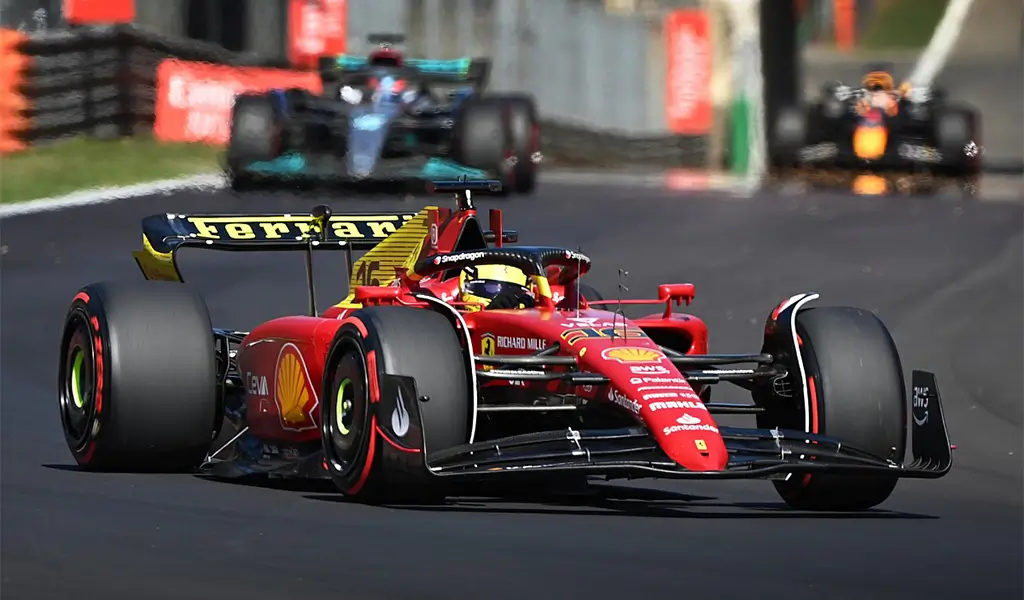In the high-octane world of Formula 1, where milliseconds can determine victory or defeat, everyone wants to outperform and beat champions that come from across the globe. We can understand the severity of the competition from the fact that Ferrari, which boasts the highest number of Formula 1 constructor championships in the sport’s storied history and is also the dream car for many, has not won Formula 1 since 2008. Beyond the roaring sound of engines and the thrill of wheel-to-wheel racing, a hidden world exists — a world powered by data. Technological advancement is changing our lives every day, thereby, Formula 1 teams have embraced a new friend in their pursuit of supremacy and victory: Artificial Intelligence (AI). This combo of advanced AI technologies with data sciences generated during a race weekend has brought a paradigm shift, revolutionizing the way teams analyze, strategize, and enhance performance.
As Formula 1 cars move around circuits at high speeds, they generate huge amounts and types of data—from the complexities of car telemetry to the tough conditions that shape the race. This data once used to be a challenge that was too difficult to turn into an opportunity. However, it has become a chest filled with a treasure of insights, thanks to the capabilities of AI. Here, we are going to go into the details of the transformative role of AI-based data analysis in Formula 1 and will show the complexities of how these technologies are reshaping the world of motorsport. From real-time decision-making on the track to simulations that fine-tune car setups, join us to understand Formula 1’s digital revolution.
The Data Deluge in Formula 1
Here in Formula 1, 2023, a sport where precision is the most important factor and victories are measured in fractions of a second, the amount of data generated is both a blessing and a challenge. How? Each Grand Prix weekend produces an irresistible deluge of information, ranging from the technicalities of car telemetry and tire performance to environmental variables such as temperature, humidity, and track conditions. These datasets extend further to encompass the driver’s biometric metrics, feedback on car handling, and even on-time decisions made during the race. Now that Formula 1 (F1) is conducted in the era where Artificial Intelligence (AI) and data analysis are widely used, teams strive to extract information and patterns from these vast and complex sets of data to have actionable insights that can propel them to the path of winning the competition.
The ability to navigate and extract valuable intelligence from this data deluge has become a defining factor in achieving success on the track.
What Does DNF Mean in F1?
In Formula 1, “DNF” stands for “Did Not Finish.” It is a title or you can say designation given to a driver or team when they are not able to complete a race due to various factors that can be mechanical failure, accidents, or other reasons that in the end prevent them from competing till the end and reach the finish line. A DNF has implications for both individual drivers’ championship standings and the Constructors’ Championship.
The Role of Technology and DNF in F1
Technology, particularly through advanced telemetry systems and onboard diagnostics, plays a very important role in handling DNF situations. Telemetry continuously conveys data, allowing teams to monitor the car’s health in real-time, identify mechanical issues, and make informed decisions regarding potential issues and challenges. AI contributes to the analysis of cars’ data that went through DNF situations. These technological advancements enable teams to identify and respond to situations and challenges swiftly, balancing the pursuit of performance with the imperative of completing races.
What Does Box Mean in F1?
The pit box or pit lane is usually referred to as the “box” in Formula 1. A crew will signal a driver to pull into pit lane for a planned pit stop by saying “box, box, box” over the team radio. The team can clearly communicate with this communication that the driver must come into the pits for services like tire changes, car adjustments, and fueling (when permitted). The team performs these tasks in the pit box, which is a designated space in the pit lane.
The Role of Technology in Box F1
Technology is the foundation of the pit box. It shapes the efficiency and precision of Formula 1 pit stops. Advanced telemetry systems and real-time data analysis contribute to orchestrating this time when pressure is building every moment. As a driver receives the “box” command, the team utilize advanced technology to monitor crucial performance metrics, such as tire wear, fuel levels, and overall car health. Engineers use this data to determine the optimal timing for a pit stop, ensuring strategic decisions that maximize the car’s overall race performance. Additionally, precision timing equipment, often aided by technology, is used for tasks like tire changes and fueling, contributing to rapid and flawless pit stops. The integration of technology in the pit box exemplifies the seamless fusion of data-driven decision-making and human expertise, crucial for gaining a competitive edge in the fast-paced world of Formula 1.
In conclusion, just like any other field, technology is having its effects in the F1 arena. Every year brands monitor all the data that they get from Formula Grand Prix. Throughout the time, till the next F1, they analyse data retrieved regarding F1 cars and racing patterns. They also analyze the driving skills of certain drivers with the help of technology and AI. It is true that F1 does not allow AI-powered diving machines and cars, yet, companies use AI-based technology to study and analyze data from previous years to have insights for the future that can enable them to build faster cars with precision.
also read:- 3 Best Free Email Marketing Tools and Services lookinglion
Conclusion:
To sum up, the introduction of AI-driven data analysis into Formula 1 is a digital revolution that is radically changing the motorsport scene. AI emerges as a potent tool that helps teams handle the intricacies of large data sets and offers useful insights for performance enhancement. Technology is invaluable when it comes to analyzing DNF scenarios or planning exact pit breaks since it allows for a smooth combination of human knowledge and data-driven decision-making. The use of AI to analyze previous data and improve future plans demonstrates the enormous effect of technology in pursuing faster and more precise vehicles, despite the ban on using AI-powered racing engines in Formula One. In this fast-paced, high-stakes environment, the connection between Formula 1 and technology constantly drives innovation and redefines the bounds of excellence.






